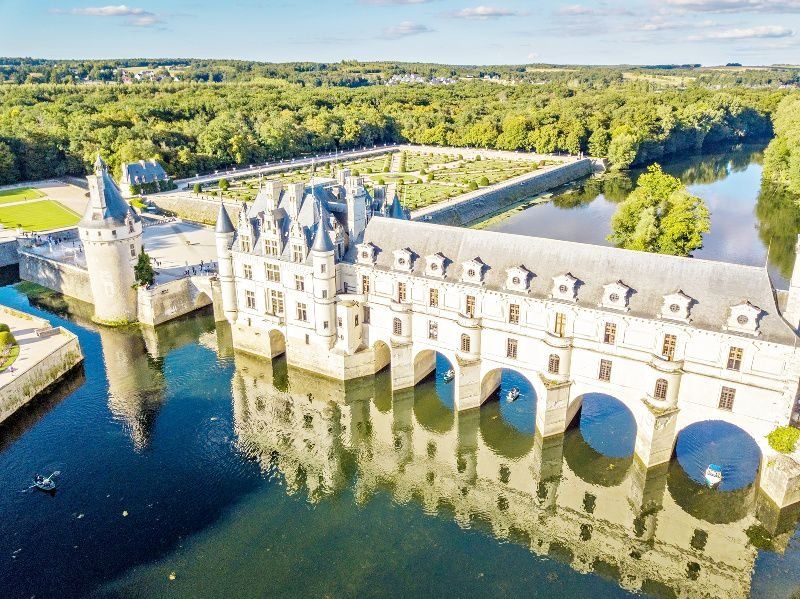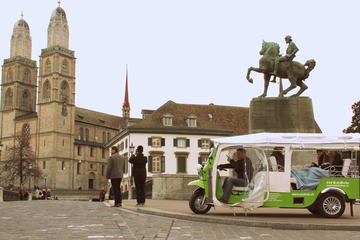Normandy D-Day Tour from Paris: Canada Focus
Address
116 Av. des Champs-Élysées, 75008 Paris,
GPS
48.8722524, 2.3009475
Normandy D-Day Tour from Paris: Canada Focus. Take advantage of a full-day small-group tour from Paris that takes you to World War II sites in Normandy and pays particular attention to the Canadian soldiers who fought in France during the war.
The Pegasus Bridge, the Bény-sur-Mer Canadian War Cemetery, Canada House on Juno Beach, the Croix de Lorraine, the Juno Beach Centre, and the Mémorial de Caen Museum are just a few of the attractions to see. Take a minibus round-trip from Paris with an informative guide to see everything the city has to offer.
Highlights
- Small-group full-day Normandy WWII tour from Paris
- Includes transportation, guide, and admission to Juno Beach Centre
- Hassle-free excursion focused on Canada’s military efforts during WWII
- Small group limited to eight people allows for a more personalized tour
Normandy D-Day Tour from Paris : Canada Focus
Itinerary
Pegasus Bridge
Pegasus Bridge is a bascule bridge that spans the Caen Canal between Caen and Ouistreham in Normandy, France, and was erected in 1934. It was a primary goal of British airborne troops during Operation Deadstick, part of Operation Tonga, in the opening minutes of the Allied invasion of Normandy on 6 June 1944. It was also known as the Bénouville Bridge after the surrounding community.
Major John Howard’s glider infantry regiment, the 2nd Battalion, the Oxfordshire and Buckinghamshire Light Infantry of the British 6th Airborne Division, was to land, take the bridges undamaged, and hold them until relieved. In the days and weeks following the Normandy invasion, the successful capture of the bridges played a critical role in limiting the effectiveness of a German counter-offensive.
Canadian War Cemetery at Beny-sur-Mer
The Bény-sur-Mer Canadian War Cemetery is a cemetery in Bény-sur-Mer, France, dedicated to Canadian soldiers who died in the early stages of WWII’s Battle of Normandy. It is named after Bény-sur-Mer, a town in the Calvados department of Lower Normandy near Caen. The grounds are elegantly designed and carefully preserved, as is typical of French war cemeteries.

A Cross of Sacrifice, a piece of architecture typical of Commonwealth War Graves Commission memorials, is located within the cemetery. The Canadians who died on the beaches and in the grueling bridgehead fights are buried in the Beny-sur-Mer Canadian War Cemetery, which is located near Reviers despite its name. There are 2,049 headstones in the cemetery, which is surrounded by pines and maples.
These gravestones commemorate the 3rd Division’s dead as well as the graves of 15 airmen. The mayor and residents of Reviers are particularly interested in the cemetery because, despite its other name, they consider it to be their own. The entrance is flanked by fine hedges, and the flanking registry buildings have platforms from which visitors may view the entire area and admire the skill and dedication that went into the planning and design of this magnificent cemetery.
La Maison des Canadiens
“In the first few minutes of the landings, almost 100 soldiers of the Queen’s Own Rifles were killed or injured within sight of this house.” This austere inscription greets guests at the door of a big, timber-framed mansion in Bernières-sur-Mer, France, overlooking Juno Beach.
One of the most recognizable buildings in Canadian military history is “La Maison des Canadiens,” or Canada House. It was one of the first houses freed by Canadian troops on D-Day, June 6, 1944, and has since become a well-known historic landmark, standing in the background of numerous black-and-white images depicting troops landing on the sands of this Normandy town.
This house was one of the few to survive, maybe because it was the preferred residence of an occupying German officer. The family of Hervé Hoffer, whose grandfather owned the house during the war but was evicted by the Germans, owns the left-hand side. Hoffer met some of the Canadians who had actually freed his house in 1984, the 40th anniversary of D-Day when huge numbers of surviving veterans first began returning on pilgrimages to Juno Beach.
Juno Beach Centre
The permanent display at the Juno Beach Centre uses images, documents, multimedia, maps, and artifacts to tell the narrative of Canadians who volunteered for military service or were mobilized at home to help with the war effort. It also depicts the fights that transported Canadian troops from Sicily through Italy and Normandy to the Netherlands.
The Centre pays tribute to the 45,000 Canadians who died in the war, including 5,500 killed in the Battle of Normandy and 359 on D-Day. The Centre is more than just a war museum. It also depicts personal testimonies and true stories about the society that these soldiers left to their children, which is now known as Canada.
Exhibits that are always on display Courseulles, June 6th, 1944, Room A Visitors stand in a replicated landing craft in this first room to view a film that puts them in the mindset of Canadians during WWII. On the walls are projected images of combat, training, D-Day, and Canada during the war years, as Canadian troops and their families express what they were thinking and experiencing at the time.
In the 1930s, Canada was known as Room B. Visitors are provided reference points to build an understanding of Canada on the eve of war after departing the introduction film, which sets the tone for the permanent display. The location, demographics, economic position, military situation, politics, and social milieu of the time are all discussed. Young visitors first encounter Peter and Madeleine through a terminal in the main hall.
The “young public” circuit is shown in this circular chamber and throughout the permanent display via the perspective of these two young “virtual” Canadians from the 1930s and 1940s. Canada Goes to War (Room C) This room, which is divided into two halves, depicts the country’s metamorphosis as it enters the war and creates its armed forces, which saw over one million men and women enlist. On September 10th, 1939, Canada declares war on Germany.
The statements of many protagonists declare the advent of war in a replicated Canadian household room. On vintage radios, the voices of Hitler, Daladier, Chamberlain, and Mackenzie King may all be heard. Canadians on All Fronts — Civilians and Soldiers This location demonstrates how the entire country was mobilized during WWII. Visitors can learn about the various components of this mobilization on both sides of a long circular hallway.
Room D’s Victory Road The tour continues with an overview of the several wars in which Canadians fought, each of which contributed to the war’s final outcome: the Battle of Italy, Normandy, the Scheldt, Rhineland, and Victory. Other military branches that performed important roles in the final conclusion are represented in this room, including the medical corps, war correspondents, engineers, and so on.
Finally, the Canadians on D-Day, the First Nations at War in Europe, the Canadian Flag, the 1st Canadian Parachute Battalion, and Canadians Behind Enemy Lines are all featured in this chamber. Many Canadian families lost loved ones in the war for independence: approximately 45,000 Canadians died. To be remembered, their names scroll over the ceiling. Large numbers of Canadians, on the other hand, went home to restart their lives and actively contribute to the development of modern Canada. E is the name of the room. Some returned, while others did not.
This room’s emotive title represents the human toll of Canada’s conflict while also introducing optimism for a better future. Many Canadian families lost loved ones in the war for independence: approximately 45,000 Canadians died. To be remembered, their names scroll over the ceiling. Large numbers of Canadians, on the other hand, went home to restart their lives and actively contribute in the development of modern Canada.
Four alcoves line the wall of this chamber, providing visitors with a different perspective on the fight. They can listen to period letters or essays written in English or French by Canadians. For the last time, the young audience meets the two young virtual guides Peter and Madeleine in this chamber. Room F is located on the first floor. They accompany you on your journey.
The film “They Walk With You” is an immersive experience that features dramatic visuals and emotionally engaging audio, including Marcel Ouimet and Matthew Halton, two Canadian war correspondents. The film re-enacts the role and sacrifice of Canadian infantrymen during D-Day and the Battle of Normandy using newsreel material from a number of sources, as well as dramatic recreations. It is recommended that viewers exercise caution. In conflict, an infantry soldier’s role is to fight and try to survive, not to see the “big picture.” “They Walk With You” immerses visitors in the life of an infantry soldier.
Croix de Lorraine
Monument to the Lorraine’s Cross This monument, which stands more than 18 meters tall and faces the sea, honors General de Gaulle’s return to French land on June 14, 1944, after crossing the English Channel on board the French warship La combattante. AVRE Churchill Tank – One Charlie A British Churchill AVRE tank that stands as a splendid legacy to the 6 June 1944 landing operations. It was unable to bridge a deep culvert one hundred yards south of the landing zone on D-Day, and its crew was forced to flee under German fire, suffering heavy fatalities.








